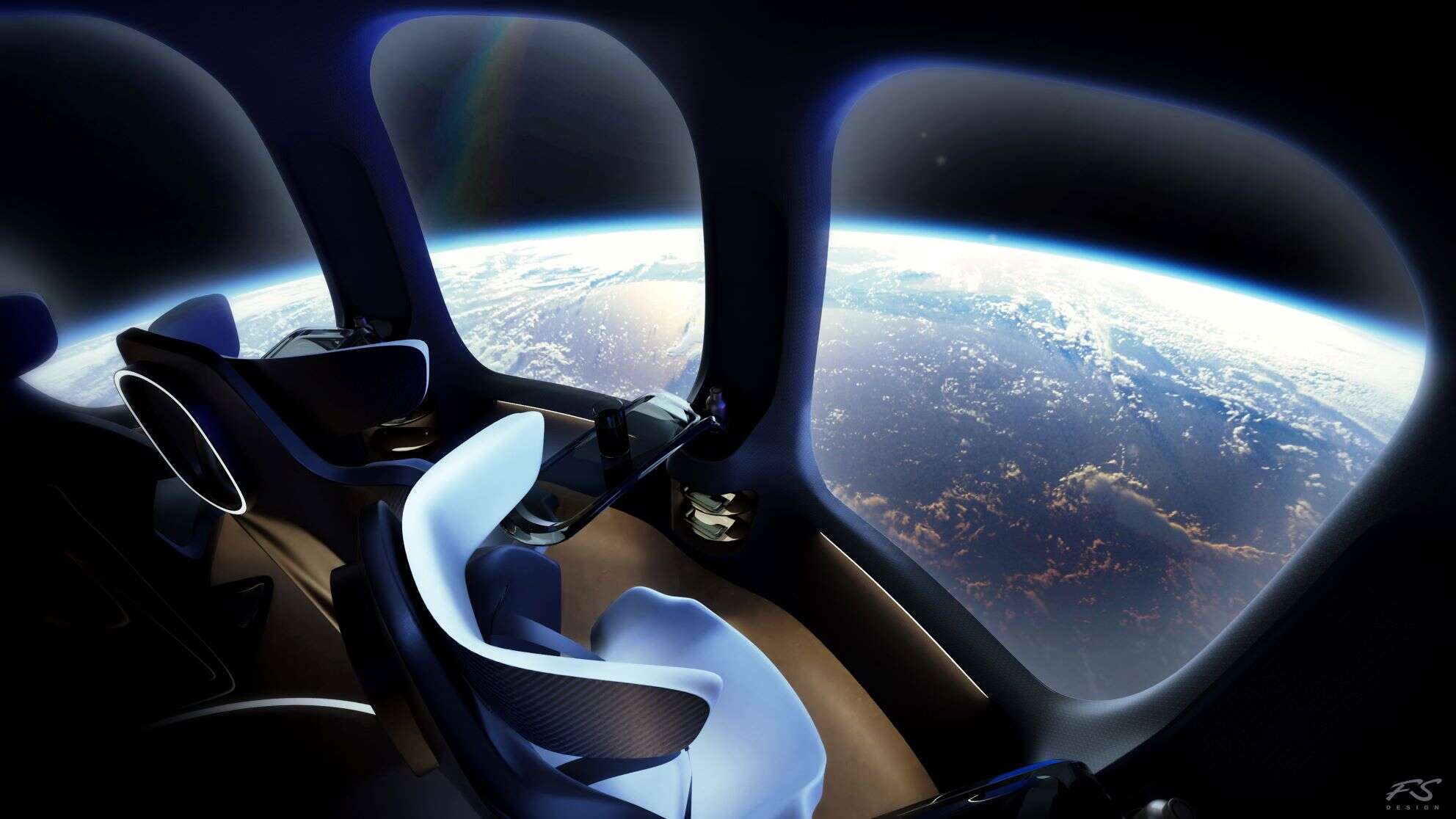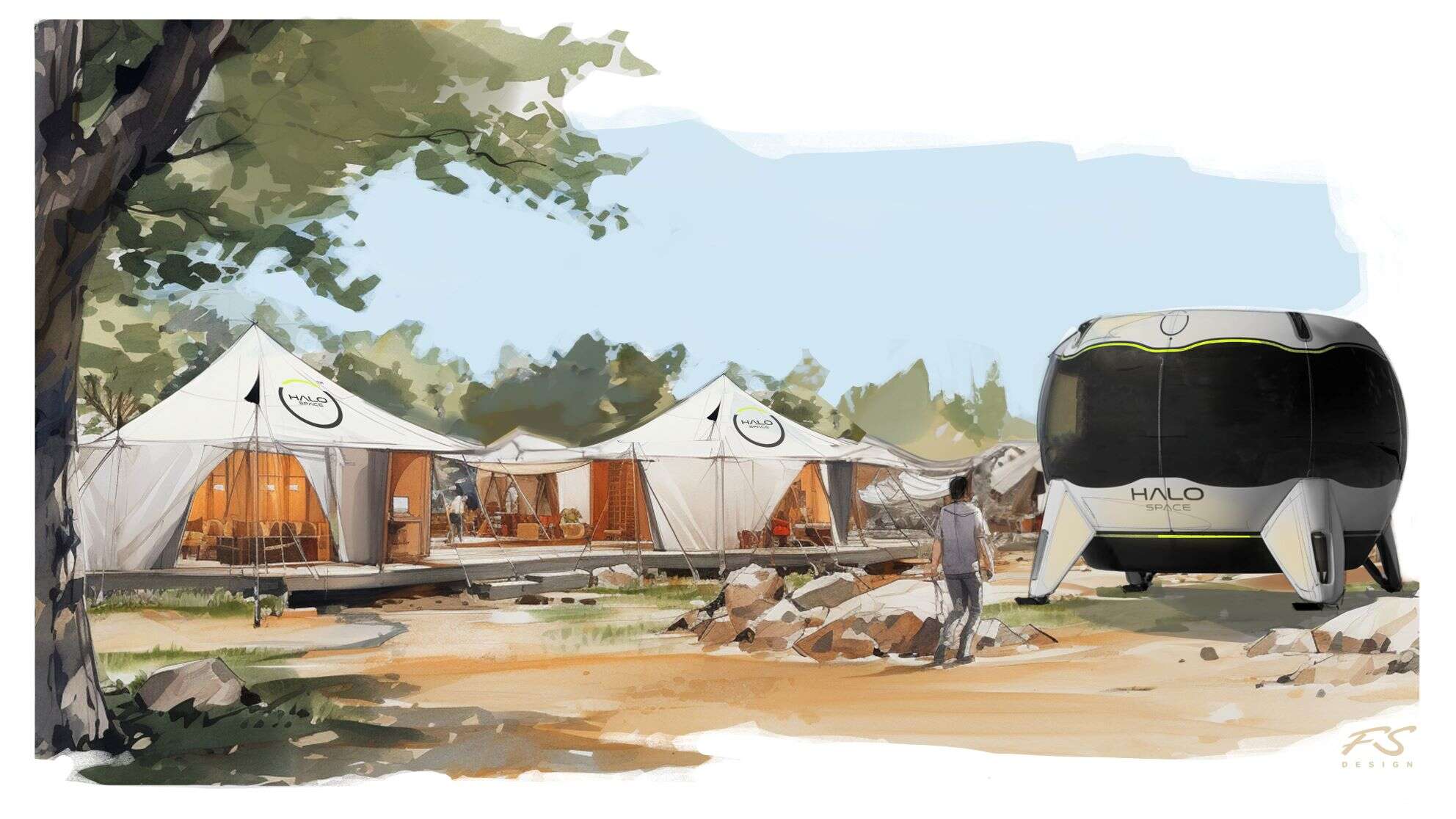HALO Space has just unveiled the design of its capsule which it says will transport travelers to the outer reaches of Earth’s atmosphere. Named ‘The Aurora,’ the capsule was devised by Frank Stephenson Design and officially unveiled at a launch event in London.
At 14.4 ft wide and standing 11.5 ft tall, HALO Space says its capsule will be capable of carrying eight passengers and a pilot to a maximum altitude of 115,000 feet or 21.8 miles above the Earth’s surface. That’s around three times higher than the average commercial flight altitude.
“Passengers will spend up to six hours inside our spaceship, and we want every minute to be unforgettable. Frank and his team have created a capsule to enhance our flight experience, utilizing unique resources, design and technology,” said Carlos Mira, CEO of HALO Space.

Throughout the development process, HALO Space and Frank Stephenson Design took steps to use components that had already been certified by international space organizations.
“This ensures a higher degree of safety while significantly reducing development time,” said Mira. “For example, by using an existing seat model, already certified for aeronautical use by EASA, we comply with the strictest safety standards in the industry and avoid years of development and testing required to certify components.”
[See also: Journey to Space with Virgin Galactic]
The Capsule

When designing a capsule of this nature, one of the most important factors is weight. HALO Space and Frank Stevenson Design have used a mixture of aluminum alloy and composite materials to target a total take-off weight of around 7,700 lbs. This is vital for ensuring the capsule can reach the target altitude, without putting unnecessary strain on components.
‘The Aurora’ capsule exudes a certain space-age quality, mixing curved lines and edges with reflective materials. Passengers sit in large seats that line the circumference of the capsule, each facing its own 30 sq ft window — one of the largest in the space tourism industry.
“Working on a project of this magnitude brings about many challenges from a design perspective,” said Frank Stephenson, creative director and founder of Frank Stephenson Design. “Crafting a beautiful interior for passengers whilst considering factors like strict safety regulations and weight distribution gave us some challenging hurdles to overcome.”
One of these challenges was the restroom that sits at the center of the capsule. While ‘The Aurora’ is certainly spacious, carrying nine passengers for potentially six hours, a restroom was an unavoidable necessity. By placing it at the center of the capsule in a metal cylinder, Frank Stevenson Design has maximized space for the user, while limiting obstructing the view of other passengers.
[See also: First Look: Space Perspective’s Sleek New Neptune Capsule]
The Styles of Space Tourism

The space tourism industry is advancing at a rapid rate with new companies regularly popping up to offer customers their own taste of space. Each of these companies’ offerings effectively falls into one of three categories.
Orbital: The ultimate and most expensive space experience currently being developed by companies like Space X. Here, large rockets are used to propel travelers fast enough to escape Earth’s gravitational pull. Once in orbit, passengers could in theory stay in space and experience weightlessness indefinitely.
Suborbital: Similar to an orbital flight but much shorter and reaching a lower altitude. Companies like Jeff Bezos’s Blue Origin and Virgin Galactic use rockets to take tourists into space and back to Earth in a very short flight duration, around 11 minutes. At the flight’s apogee (the point of the flight’s highest altitude), passengers will experience weightlessness for a few minutes.
Near space: This is the market HALO Space is targeting in which passengers travel slowly without the use of rockets to high altitude. There will be no weightlessness, and the flight reaches a lower altitude than a sub-orbital flight. However, it’s a much longer flight duration allowing passengers to soak up the incredible views. Also, by not using rockets the flight is much more cost-effective, bringing the price down and making space tourism more accessible.
HALO Space’s spherical capsule will be carried to the edge of Earth’s atmosphere by a large helium balloon. This method results in a much slower ascent and descent, resulting in no rapid acceleration so no increased G-force. Flights will last around four to six hours with one to two hours spent at the most impressive altitude.
[See also: Exclusive Resorts to be First Travel Group in Space]
The Experience


HALO Space is working to ensure each passenger’s experience is a bespoke one, including pre and post-flight.
A preflight consultation will allow customers to express aspects of the journey they are most interested in. This information can then be used to create a customized AR experience for passengers as they travel on the way to the edge of the atmosphere. Imagine a handy virtual arrow that points out key landmarks as you climb and boxes that relay additional information about the flight.
The food and beverage options for passengers will also be bespoke, allowing them to dine in style as the capsule crests 115,000 ft.
So far, HALO Space has conducted five successful test flights with an actual-size prototype, the sixth test is set to take place in Saudi Arabia in June of this year.
HALO Space is planning to begin offering commercial flights to customers in 2026, with a starting price of $164,000, considerably cheaper than orbital and sub-orbital flights. The company’s aim is to transport 10,000 passengers to near space by 2030.
For more information, visit halospaceflight.com










